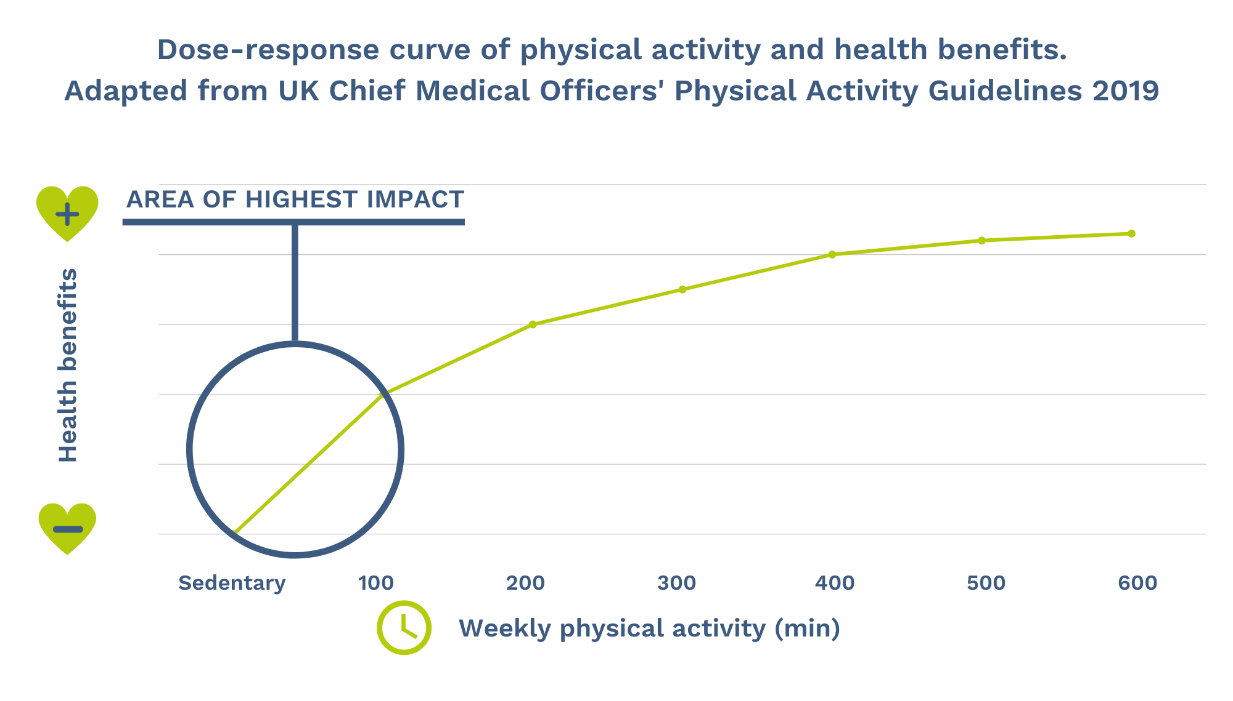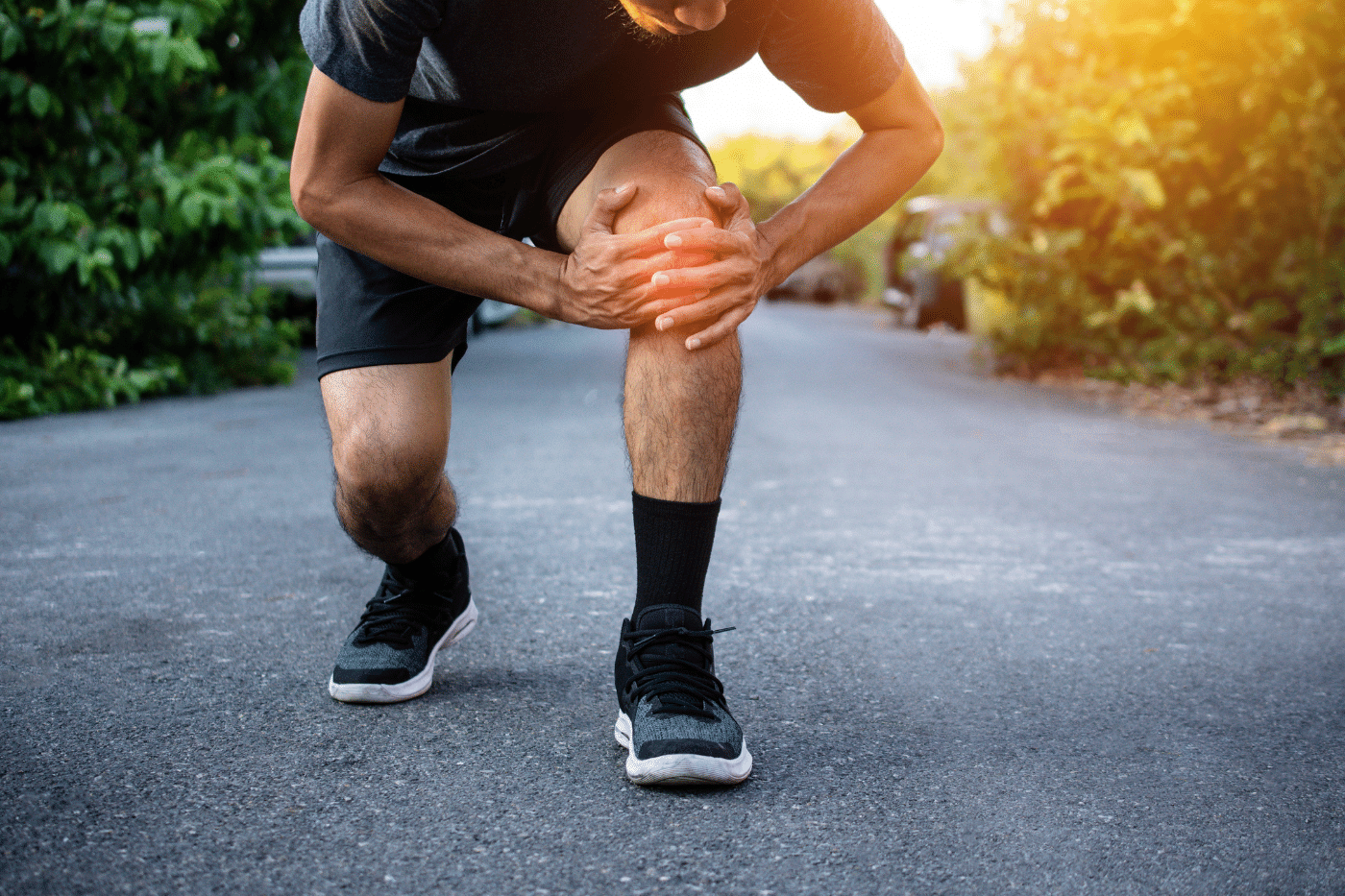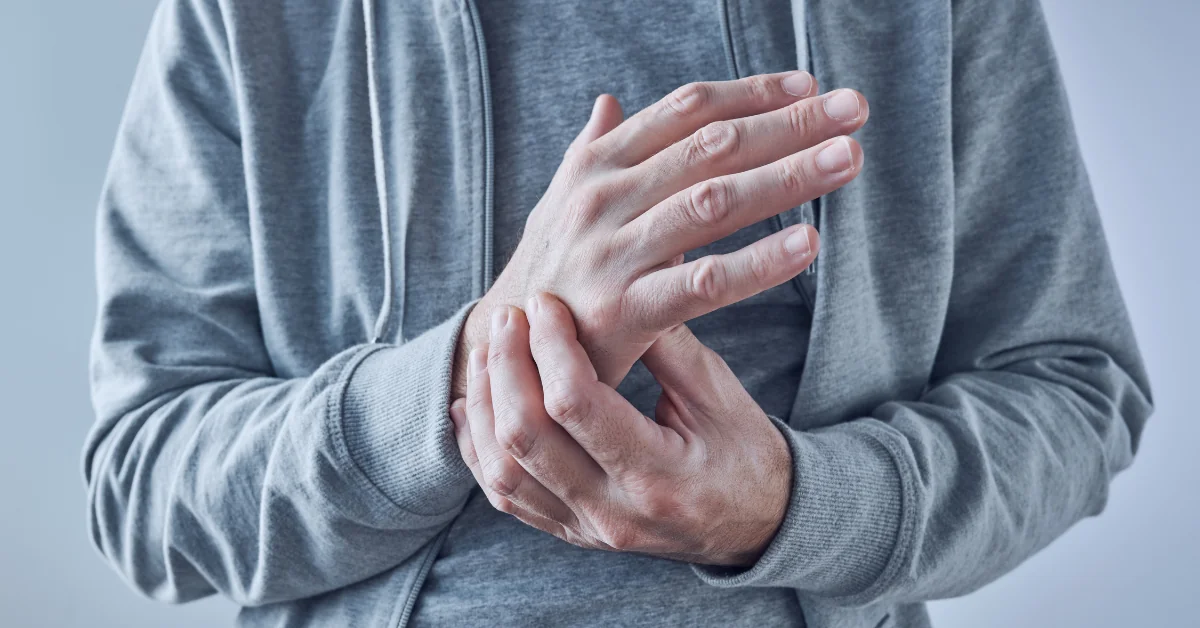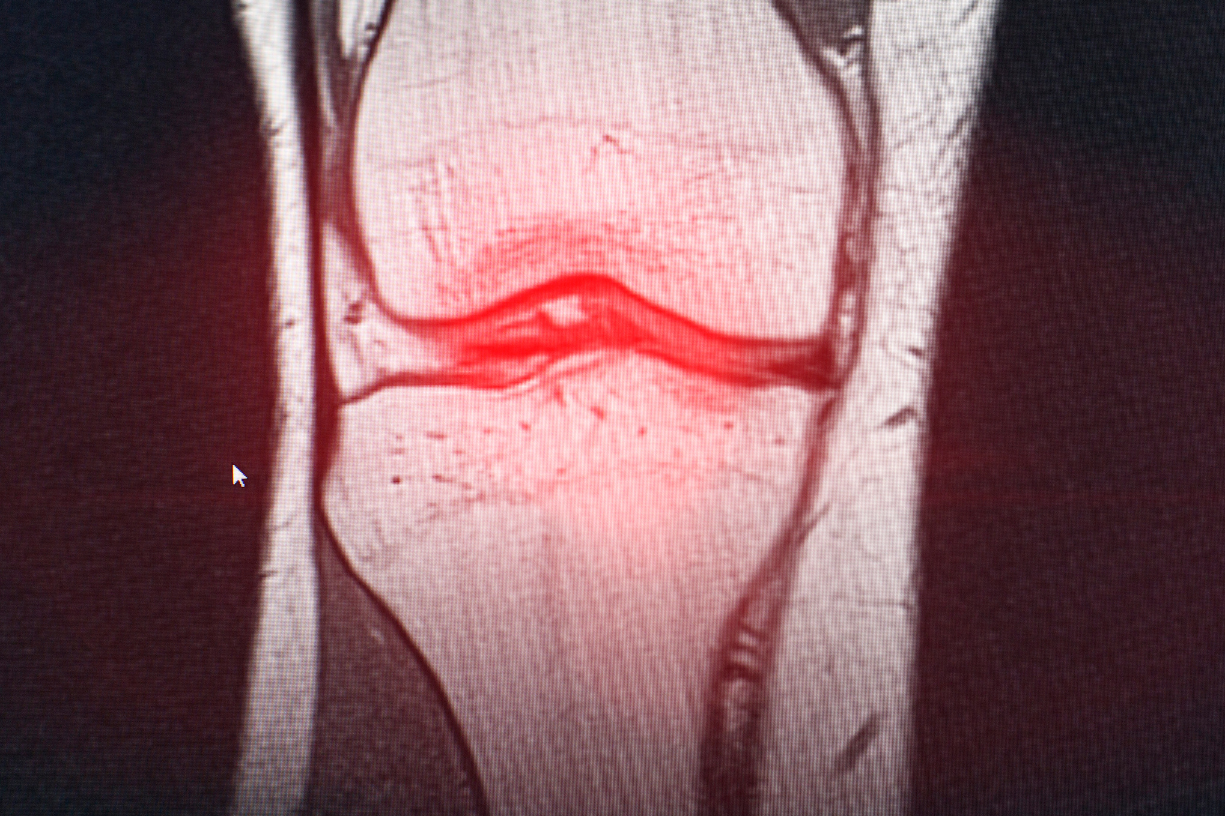Physiotherapy Exercise for Knee Pain: Your Complete Guide
Are you looking for Physiotherapy exercises for knee pain?
Our comprehensive guide is here to help. We’ll address your most pressing questions about knee pain, exploring what might be causing it and when to seek medical attention.
You may be surprised to discover the various conditions and injuries that can contribute to knee pain. We’ll debunk common myths and provide tips on preventing future discomfort.
We understand how important finding relief is to get you back to normal. That’s why we’ll explore different treatments and strategies for managing knee pain, including rest and movement. We’ll even offer advice on speeding up the recovery process.
With the right treatments and strategies, including Physiotherapy exercises for knee pain, you can alleviate your discomfort and work towards a healthier, pain-free knee.
If you’ve been experiencing knee pain for more than two weeks or if the pain is severe, it’s crucial to consult with a Physiotherapist. They can help rule out any underlying medical conditions and determine the best treatment for your specific needs. Book a free assessment with one of our physiotherapists online, or keep reading to learn how you can take control of your own knee pain.
In this blog we’ll be looking at the following:
– What are the causes of knee pain?
– When should I worry about my knee pain?
– Why is your knee in pain?
– Knee pain myths you need to know
– How do you treat knee pain?
– Is it better to rest or move knee pain?
– How long does knee pain take to heal?
– What are the best Physiotherapy exercises for knee pain?
– Frequently Asked Questions
GET A FREE KNEE ONLINE PHYSIO ASSESSMENT.
What are the causes of knee pain?
If you’re dealing with knee pain, it’s important for you to know that the most common type of pain is muscular. You may notice that your knee feels tight, stiff, and uncomfortable, especially after a restless night’s sleep or a sudden increase in physical activity.
It’s important to keep in mind that even without an injury or tissue damage, lifestyle factors like stress, limited physical activity, poor sleep, mood, or beliefs can contribute to this kind of pain.
While other potential causes like tendinopathies or osteoarthritis are less likely, it’s still crucial to rule them out to ensure an accurate diagnosis and appropriate treatment.
If you want to learn more about your knee pain and how to manage it effectively, we recommend booking a free assessment online with one of our experienced Physiotherapists. We specialise in providing Physiotherapy exercises for knee pain and can develop a personalised treatment plan to get you back on track.
When should I worry about my knee pain?
If you’re dealing with knee pain, there’s no need to worry. In most cases, it’s treatable and nothing to be overly concerned about. However, it’s important to pay attention to certain symptoms that may indicate the need for medical attention.
If you have a history of malignancy, experience infective symptoms like a fever, sudden severe pain after a fall or injury, or develop knee stiffness along with difficulty using the restroom, it’s crucial to seek a medical assessment from NHS 24 by dialling 111.
Additionally, if you’re experiencing pain, tingling, numbness, or weakness in your arms or legs, have a history of inflammatory disease (especially while on immunosuppressants), or notice any abnormalities in sensation or power in your arms or legs, it’s essential to get checked out as soon as possible.
For patients under 18 or over 55 years old with new onset symptoms, it’s recommended to see your GP.
However, if you don’t have any of these symptoms, Physiotherapy exercises for knee pain can help alleviate discomfort and get you back to your normal routine.
Why is your knee in pain?
When it comes to managing your knee pain, it’s crucial for you to understand the nature of pain itself. Remember, pain is personal, normal, and always real.
Your brain perceives pain as a natural response, acting as an alarm system to potential harm or danger.

Interestingly, pain can occur even without apparent tissue damage, and its intensity isn’t always proportional to the injury. The context in which pain occurs plays a significant role in how it’s perceived.
Instead of thinking of your body as a machine that needs fixing, consider it more like an orchestra, with each movement acting as a different instrument. To restore effective function within this orchestra, the goal is to re-tune the instrument when you experience pain or discomfort.

It’s important to note that there’s a distinction between pain and discomfort during recovery from an injury. Gradual stress is necessary to improve your body’s function, even if it causes some discomfort. While resting the painful area might seem like the right approach, it can actually hinder your recovery. Instead, you need to gradually stress the tissue to help it adapt and become stronger.
As such, Physiotherapy exercises for knee pain, with the right dose of stress, is an effective way to restore function and alleviate pain during recovery.
GET A FREE KNEE ONLINE PHYSIO ASSESSMENT.
Knee pain myths you need to know
It’s completely understandable if you have believed in old knee myths that were established before we had a better understanding of the issue. However, relying on these myths can create fear and dependence on others to solve the problem.
The good news is, with a better understanding, you have the power to fix the issue yourself. Educate yourself on the best Physiotherapy exercises for knee pain and take action. Not only does this save you time and money, but it also improves your overall quality of life.
Myth #1: Running is bad for your knees.
Contrary to popular belief, the notion that running is bad for your knees is actually a myth. In fact, research has shown that runners are not at a higher risk of developing knee arthritis compared to non-runners (1). On the contrary, those who participate in running activities, even at moderate levels, may actually have healthier knees.
According to multiple studies and experts in the field, running can actually fortify and strengthen the joints, including the knees (2). Regular running promotes the health of the cartilage in the knees, which helps stave off knee arthritis. It is important to note that this applies to individuals who engage in running with proper form and technique.
Interestingly, it is those who do not run or lead sedentary lifestyles that are more susceptible to knee issues and arthritis. Lack of physical activity can lead to weak muscles and poor joint support, increasing the risk of knee problems.
While it is true that excessive running or high-volume training, such as ultra-marathon running, can potentially increase the risk of certain injuries, including knee issues, it does not mean that running itself is inherently harmful to the knees. It is crucial to find the right balance and listen to your body’s signals to avoid overexertion and injury.
So, if you enjoy running or are considering taking it up, rest assured that you’re not damaging your knees. In fact, by incorporating running into your routine while being mindful of your body’s limits, you can actually contribute to better knee health and overall wellbeing. Remember to consult with a healthcare professional or a qualified trainer for personalised advice.
Myth #2: Your knee hurts because it’s out of alignment and needs manipulating or mobilising to put it back.
If you’ve been considering manipulating or “cracking” your joints to find relief from knee pain, it’s important for you to know that such changes typically provide only temporary relief and do not address the underlying cause of the problem. Despite what you may have heard, poor knee posture and alignment are not strongly linked to knee pain.
According to a systematic review and meta-analysis, which looked at 47 randomised trials and included over 4000 participants, found joint manipulation or mobilisation alone can only provide immediate or short-term pain relief that doesn’t last in the long run (3).
Instead of relying solely on manipulation, it’s crucial for you to address the root cause of your knee pain by adopting healthy habits and seeking expert advice. Factors such as poor physical activity habits, stress, lack of sleep, and limiting beliefs may contribute to your pain.
So, while spinal manipulation may provide momentary satisfaction, it’s not a sustainable solution for long-lasting relief. If you want to prevent your knee pain from recurring, focus on developing healthy habits and seeking expert advice. This will help you effectively manage your knee pain and enhance your overall quality of life.
Myth #3: Your knee hurts because you’re getting old and it’s a sign of arthritis from wear and tear.
If you’re in your middle age and experiencing knee pain, it’s common to think that it’s just a normal part of getting older and that drugs are the only solution to manage the discomfort and decline in function. But let me tell you, this assumption is not only unhelpful for your recovery but also untrue.
You see, knee pain can affect anyone, regardless of age. It’s not necessarily caused by wear and tear, and many young people can experience knee pain while some elderly individuals don’t. Even if you have knee arthritis, it’s possible to have minimal pain despite significant joint deformities. Fortunately, Physiotherapy exercises has emerged as a promising treatment option for knee pain, regardless of age.
A 2021 study looked at over 300 participants with knee osteoarthritis (male and female). They found there was no difference in pain whether they did exercise at a high intensity or low intensity, both helped improve pain symptoms! This would go against the notion that knee arthritis gets worse if too much exercise is performed, suggesting structure is not as important as previously thought.
So, getting a scan of your knee won’t provide much helpful information unless you exhibit any of the red flags described earlier. The scan won’t reveal why your knee is painful or offer any new insights. Instead, the key to managing knee pain lies in advice, education, and movement.
It’s important to seek guidance from healthcare professionals who can provide you with the right knowledge and tools to manage your knee pain effectively. By understanding the underlying factors contributing to your pain and implementing appropriate exercises and lifestyle modifications, you can find relief and improve your knee health.
Myth #4: “I don’t want to mask the pain with tablets”
If you’re dealing with knee pain, the idea of taking painkillers might give you some concerns. You may worry that they will merely mask the pain or potentially worsen it if you move your knee too much. On the other hand, some people may opt not to take painkillers based on personal beliefs.
But here’s the thing – taking short-term painkillers under the guidance of a GP or pharmacist can actually promote earlier recovery and enable you to exercise. You see, acute knee pain is often caused by increased sensitivity in the knee rather than actual damage. It’s important to remember that pain doesn’t always indicate harm.
By incorporating painkillers into your pain management plan, you can gradually increase your knee mobility and break the cycle of pain, limited movement, stiffness, and sensitivity. So, don’t hesitate to have a conversation with your doctor about the pain management options available to you. These options can help you recover faster and get back to your daily activities with greater ease.
GET A FREE KNEE ONLINE PHYSIO ASSESSMENT.
How do you treat knee pain?
Now that you understand the benefits of stress, it’s time to leverage it in managing your knee pain. By purposefully stressing your knee just enough, you can trigger small micro-traumas that signal to your brain and central nervous system to improve your range of motion and stress tolerance.
To maximise these benefits, prioritise proper sleep and employ effective stress management techniques. When your body is well-rested and stress is managed, it enters a state of super-compensation. This means that it becomes stronger and more resilient than before, as illustrated in the super-compensation graph below.

Consistently challenging your knee with the right amount of stress and allowing for sufficient recovery time will expand the size of your physical capacity “cup” and lead to improved symptoms and knee function. This concept is known as bioplasticity and serves as a powerful tool for recovery.

However, it’s crucial to exercise caution and avoid overdoing it. Too much stress, whether it’s mental or physical, can actually exacerbate your knee pain and increase muscle tension. So, always strive to strike the right balance between stress and recovery to achieve optimal results.
Is it better to rest or move knee pain?
If you’re dealing with knee pain and searching for a short-term solution, consider trying a Sports Massage. Not only can it provide relief from pain, but it can also improve your mood, boost your immune system, and reduce stress levels. Additionally, the therapist can demonstrate exercises outlined in this blog to help alleviate your fear of movement.
However, if you’re seeking a more long-term solution, the Treatment Pyramid outlined below is the way to go. The first step is finding a reputable Physiotherapist who can educate you about your condition, help reduce your fear of movement, and create a personalised rehabilitation plan based on your specific needs.

The next step involves engaging in general movement therapy, which has been proven effective as a pain reliever for most muscle-related pains. By participating in at least 150 minutes of moderate-intensity exercise per week, including 30 minutes of progressive resistance training on two separate days, you can make a significant difference.
Don’t worry if you’re not currently getting enough physical activity – even a 5-minute walk each day can make a difference!

Increasing your physical activity can enhance your physical and mental resilience to movement and activity through bioplasticity, meaning your knee tissue can change and improve with movement, ultimately reducing pain and the risk of injury or discomfort.
Think of your physical capacity as a cup, and daily physical movements and mental stressors as the liquid within it. The larger your cup – that is, the greater your physical capacity – the more stress your knee and brain can handle. This, in turn, reduces your likelihood of experiencing pain and discomfort. However, simply resting won’t solve the problem. Instead, we need to intelligently stress your tissues to initiate improvements in function and symptoms.

This is where the concept of the Goldilocks principle in rehabilitation comes into play. Merely resting your knee or relying on a knee brace won’t help – in fact, it can weaken your muscles and worsen your symptoms. On the other hand, excessive movement can aggravate your symptoms and delay your recovery. This is where Physiotherapy exercises for knee pain with the optimal load can be incredibly beneficial.

How long does knee pain take to heal?
It’s important for you to keep in mind that not everyone experiencing knee pain will achieve a complete resolution of their symptoms and disability. However, by following a solid rehab plan, you can maximise your chances of improving painful symptoms and returning to normal levels of function.
Remember, recovering from knee pain is often a journey with its ups and downs.

The speed of your recovery depends on various factors such as the quality of advice and education you receive, your compliance with recommended treatments, and your levels of fear and catastrophisation.
To avoid setting unrealistic expectations, it’s best to view your rehab as a series of milestones rather than rigid timelines.

Our knee Physio program offers a structured approach that focuses on these milestones, guiding you through each stage of recovery one step at a time, when you’re ready.
Unfortunately, there’s no magical solution for knee pain. While placebos like acupuncture or dry needling may provide immediate relief for some individuals, they only offer temporary benefits, requiring additional treatments in the future. This can be costly and prolong your long-term recovery.
However, the good news is that by following a solid rehab plan that focuses on Physiotherapy exercises for knee pain shown in the next section, you can maximise your chances of improving your symptoms and returning to normal levels of function.
What are the best Physiotherapy exercises for knee pain?
As experts in Physiotherapy exercises for knee pain, we understand the importance of staying up-to-date with the latest scientific research and utilising our own extensive experience. That’s why we’ve meticulously curated the exercises below to optimise your knee’s physical capacity. These dynamic strengthening and mobility protocols are specifically designed to enhance your knee’s physical capacity.
It’s important to note that the most effective rehab exercises for you are typically the ones that challenge you and may initially feel uncomfortable. For optimal results, we recommend performing each exercise at least twice a day. Start with 5 repetitions and gradually increase to 15 reps as you feel capable. It’s normal and even beneficial to experience slight discomfort (up to a 5/10 pain level), but if it exceeds a 6/10, ease off.

Once you can comfortably complete 15 repetitions of level 1, progress to level 2, and so on. Remember to exhale as you move into discomfort, as this will aid in relaxation and gradual improvement in range of motion, relieving symptoms. With patience and consistency, you’ll be well on your way to recovery in no time.
If you’re currently dealing with knee pain, taking action and seeking help is crucial. Our free online knee physiotherapy assessment is an excellent starting point. By utilising scientifically-based exercises tailored to improve your knee’s physical capacity, you can gradually build strength and mobility, resulting in reduced pain and improved overall health.
So don’t delay any longer – check out our FREE ONLINE KNEE PHYSIOTHERAPY ASSESSMENT today and take the first step towards a future free from pain.
If you’re seeking personalised guidance to address your discomfort, our experienced physiotherapists are here to assist you on your journey to a pain-free knee. We offer a range of treatments tailored to your specific needs.
But that’s not all – we understand that comprehensive wellbeing includes both physical and mental health. That’s why we also provide Personal Training Edinburgh to help you stay active and fit. Our certified trainers will work with you to create a tailored fitness plan that complements your Physiotherapy.
GET A FREE KNEE ONLINE PHYSIO ASSESSMENT.
Frequently Asked Questions
How can I fix my knee pain?





